Earlier this year I wrote about Monster of the Sky, a Kickstarter-funded puppet film by Sam Koji Hale. The first portion was filmed here in Portland, and I got to watch some of the filming and meet a few of the puppeteers, the set designer, and the director of photography. The film uses rod puppets, with the puppeteers in green suits so they can be edited out later. Hale just launched a second (and final) Kickstarter campaign for post-production, so if you missed out on the first campaign, you can still pledge for a copy of the movie or other goodies.

Hale is also using facial motion-capture to animate the puppet’s face, based on actor Sumiko Braun. You can see a brief video test showing Braun reading a monologue with the little dots attached to her face, and the character Sky’s face, based on a 3D scan of the actual sculpted puppet head.
When the crew was together filming Act 1 of the movie at Stage 13 here in Portland, I got to get a firsthand look at the shooting process. Unlike the rehearsal from this summer, this time the puppeteers were all wearing their green suits (sometimes with a full face mask), and more of Charles Daniels’ set pieces were finished.
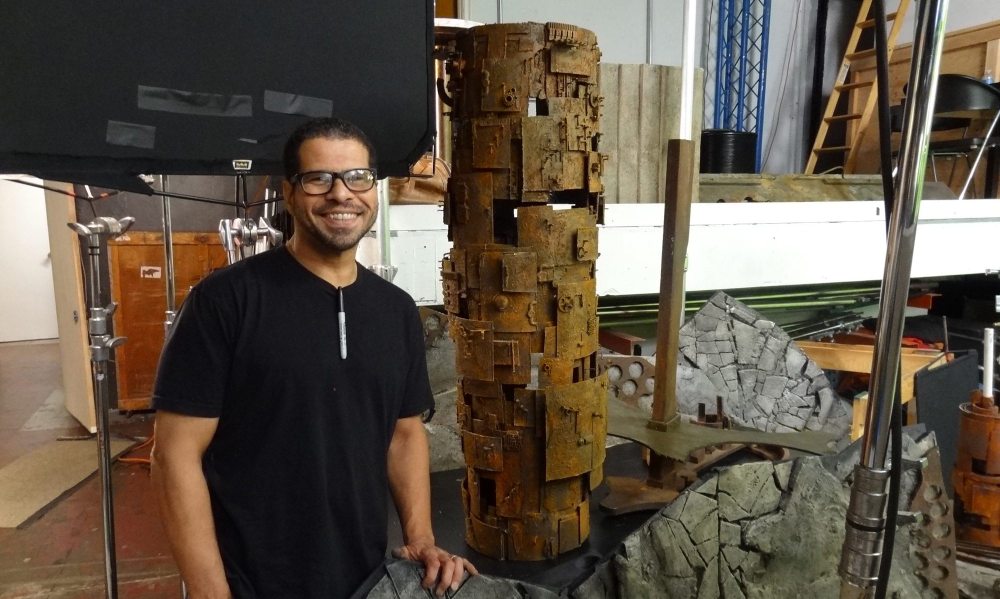
Daniels is a freelance artist who builds kinetic sculptures. I spent some time chatting with Daniels about the sets, and then was able to follow up with some of the rest of the crew via email. He was introduced to Hale through one of the puppeteers, and created several set pieces, including a rotating tower in small scale and then a puppet-scaled section of the wall to simulate the way panels on the tower shift past each other. He’ll also be working with Toby Froud on his film Lessons Learned.
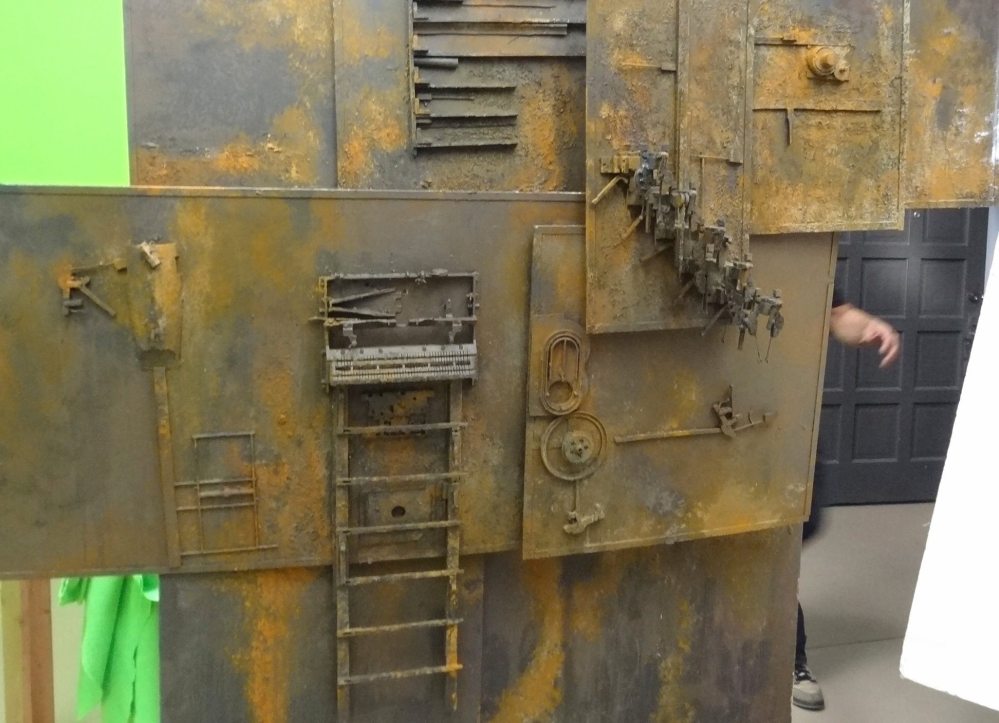
GeekDad: How many pieces did you make for Monster of the Sky?
Daniels: More than Sam said I would! There are three sets, and three major background elements. I’ve been working on the film since May.
GeekDad: What are these made of? How did you get that rusted metal look?
Daniels: The texture is from stippled hot glue and a material called colloidal silica—it’s powered, but it’s related to asbestos so you have to be pretty careful with it. I use lots of found objects—things I get from Goodwill, free boxes, things like that. I’m kind of a hoarder, or I would be if I didn’t use it. I’m in love with tiny machines and parts.
GeekDad: Are there any fun pieces of things that people might recognize if they knew about them?
Daniels: Well, on one wall there’s a section that’s made from the belly of a toy Starship Enterprise. And on the tower over the well I used the legs from one of those battle droids from Star Wars.
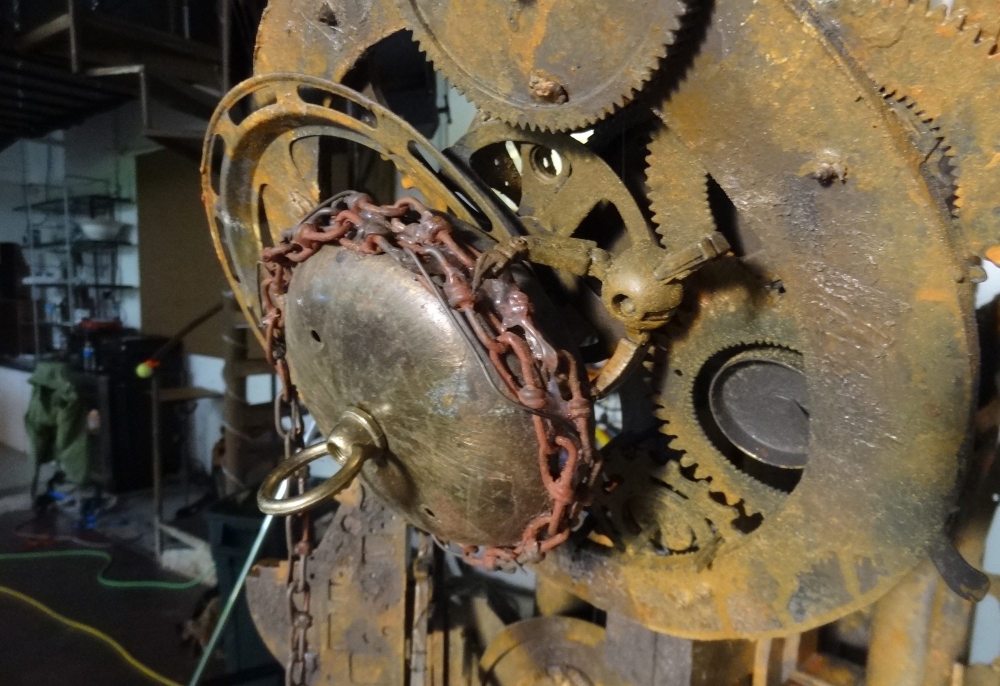
GeekDad: What happens to the sets after shooting?
Daniels: We’ll have a show at the Hive Gallery, and some of the pieces may be kept by the production. The rest will be repurposed, turned into other things. Unless my wife has her say—then it ends up in the dumpster!
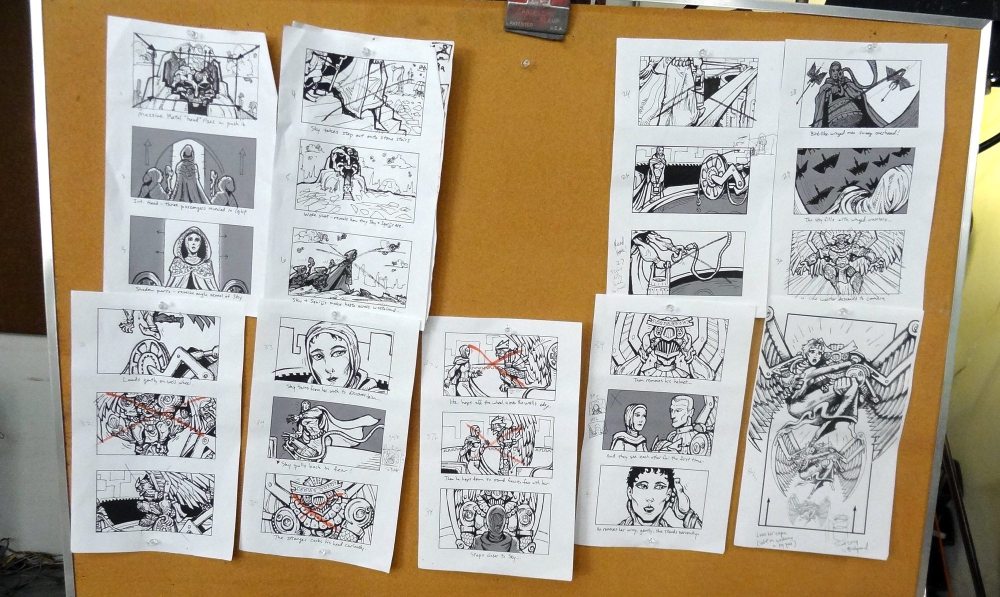
I chatted a little with some of the puppeteers in between shots, but mostly I watched and then asked some questions via email. Included here are Mat Rudenberg, Director of Photography, and puppeteers Lance Woolen, Afsaneh Aayani, Geahk Burchill, and Rob D’Arc. (A couple of the other puppeteers, Bill Holznagel and Taylor Anne Finch, weren’t available for interviews at the time.)
GeekDad: How did you get connected with Sam on this project?
Rudenberg: I first worked with Sam on several short films by director Ben Barnes known as the Fish Out of wWter series. Sam built the fish character puppet and helped with the puppeteer.
Woolen: I’ve known Sam for only a couple of years; he was in Portland showing one of the Handmade puppet films I think. We met and hung out for a bit and have been Facebook friends since. This is the first time we’ve worked together.
Burchill: I met Sam at his screening of Yamasong through Katie McClenahan when Handmade Puppet Dreams came to Portland. Later I worked with him on puppetry film called The Power of Tensley last year. Sam gave me wonderful advice when I ran my Kickstarter campaign right after he did.
Aayani: Last year I decided to come to the US to chase my dreams! Basically I didn’t know anyone here. I met Heather Henson in China, so, I wrote a message to her to help me to find other puppeteers in Portland! At that time she and Sam were about to come to Portland to film a project and they needed extras! So, she introduced me to Sam and I’m so thankful that I had the opportunity to work with these amazing people. It was wonderful that I could celebrate my anniversary of coming to United States with Sam, because he was the first person who helped me to find my way in the US and exactly on my anniversary I had the chance to work with him again.
D’Arc: I had hired Sam back in 2002 to help me sculpt some character prosthetic makeups for SeaWorld San Diego’s “Terrors of the Deep” haunted event which I was the makeup designer for. We have been in touch recently when Sam was teaching a Paperclay class at the National Puppetry Festival at Swarthmore College in Pennsylvania, and I volunteered to assist him. I asked him to consider letting me come down to Portland from Seattle to assist on the shoot, although it was more of a continuously repeated offer, and he was good enough to invite me to come down despite the pestering.
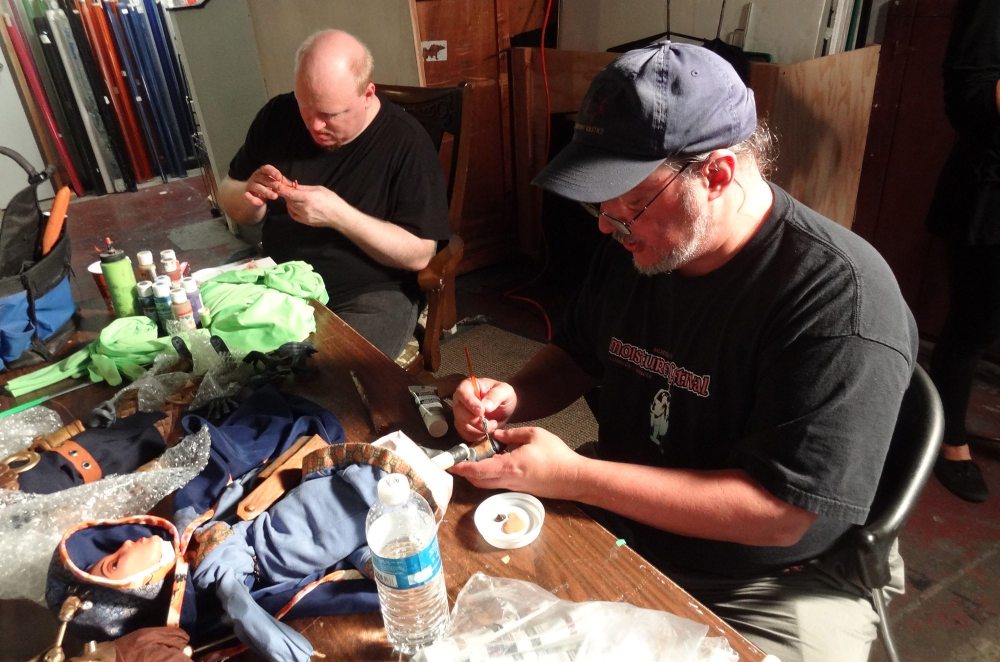
GeekDad: What other projects have you worked on in the past: live shows, movies, etc.?
Rudenberg: I have worked as a Director of Photography on a variety of shows including The Hard Times of RJ Berger (MTV), Blue Mountain State (Spike), The Kroll Show (Comedy Central) and movies such as the horror film Mr. Jones (Anchor Bay films, releasing early next year) and Behaving Badly (Mad Chance, also releasing early next year).
Woolen: I’ve been doing puppetry is one form or another my entire career, if not performing then building or directing. Starting with Tears of Joy puppet theater in 1986 as a touring performer and later as the Technical Director, and occasionally directing shows for 12 years. After that I managed to get work at Will Vinton Studios as a mold maker and puppet builder for stop-motion TV commercials and 2 shows. Later when Vinton had been turned into Laika I returned to work on Coraline, Paranorman, and the new film coming out next year The Boxtrolls. The next project I’m working on will be a short film by Tony Froud. I could go on at some length about the master puppeteers I’ve had the amazing fortune to work with… Some of them are really mind-blowing… in a puppet kind of way. There is in fact a family in Portland now that worked in the Beijing Rod Puppet Theater for over 30 years and are truly masters in the rod style unequaled anywhere in the US. I’m privileged to call them friends and have worked with them several times.
Burchill: I’ve worked with marionette puppets for fifteen years now and have done seven shows in that time with three troupes. I worked at Michael Curry Design for over 6 years building puppets. I’ve also worked with Atomic Arts making props for Trek in the Park. I also ran a Kickstarter this year for a puppet film called The Doom That Came to Fiddle Creak, and I’m a cofounder of the Castiron Carousel marionette troupe.
D’Arc: I make and sell puppets at Pike Place Market in Seattle. They’re not this sort of puppet—they’re little toy puppets made from tongue depressors.
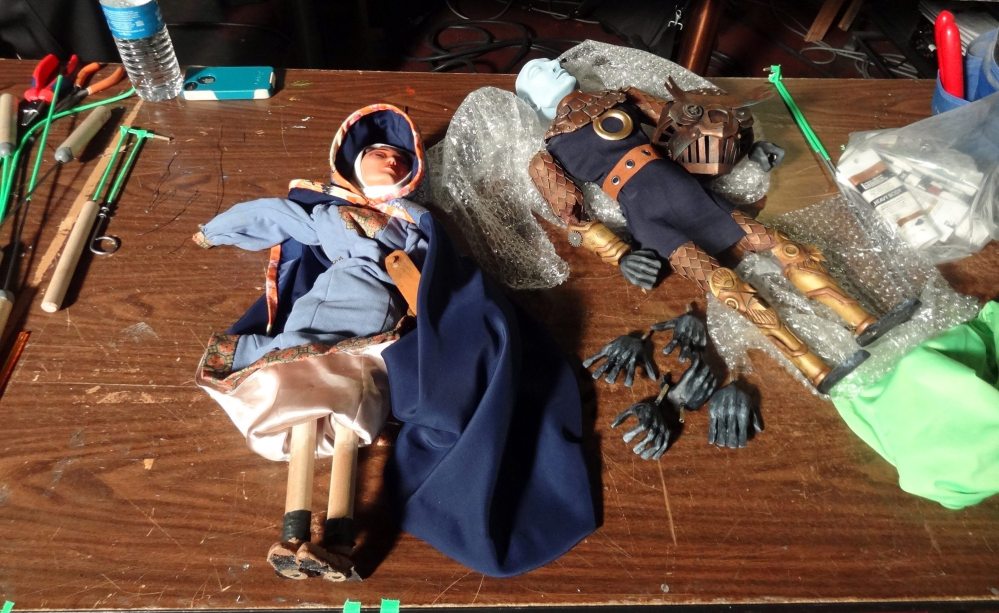
GeekDad: For the puppeteers, how did you get into puppetry to begin with?
Burchill: I went to a party in the late ’90s. Someone had loaned the host a video camera. In those days no one had video cameras that we knew and we didn’t want to waste the opportunity so we performed a puppet show on the coffee table.
Aayani: I studied puppetry at the Art University of Tehran and I have a bachelor’s degree in puppetry! I loved theater since I was a child. Eight years ago Peter Schumann came to Tehran and I had the chance to see his show. After that, I found out that puppetry is what I really want to do in my life. I studied so hard and passed the entrance exam for the Art University of Tehran. Two weeks after starting school, I started puppeteering and since then I’ve worked as a puppeteer, designer and director! I’ve been working as a puppeteer and designer for 9 years, I also worked for public TV in Iran as a voice actress for 3 years. I won many prizes in different festivals and participated in international festivals around the world (in Poland, China, Sri Lanka…). Right now I work with “Tears of Joy” as a touring puppeteer and it’s a new experience for me.
D’Arc: My “How I got into Puppetry” story is that I my parents took me to see a performance at the Bil Baird Marionette Theatre on Barrow St. in NYC in 1968, and I refused to get out of my seat when the performance ended. Peter Baird, Bil’s son, asked me if I’d like to have a tour of the back stage, and I got to see the marionette bridge that Bil had taken a fall from a few weeks earlier, and the workshop, and the marionettes hanging up behind the scenery… When I came down the stairs into the lobby, Bil Baird was talking with an adult and spotted me coming down from his workshop, and, this is the amazing bit, he interrupted the adult, came up almost nose to nose with me and asked excitedly, “What’d you think?” No adult had ever interrupted another adult to ask me ANYTHING, let alone my OPINION! I was hooked. When I had my own theatre, I always took the time after every show to talk about what magic went on behind the scenes for the kid that might become a puppeteer someday!
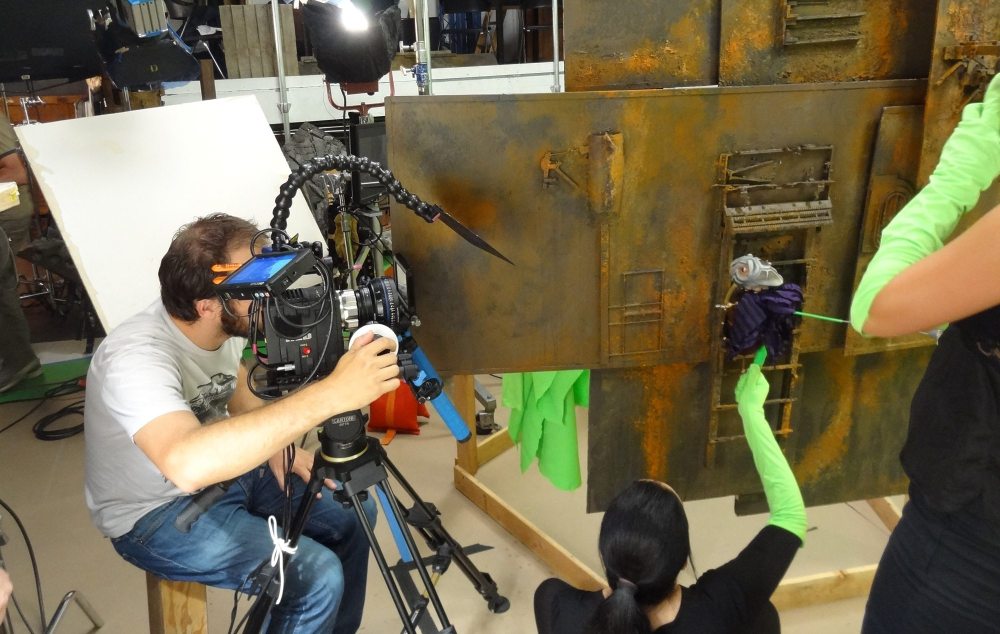
GeekDad: Have you done rod puppetry before, or mostly other types?
Burchill: I am mostly a Marionettist. I have done a fair amount of Bunraku and rod puppetry but very little Green Screen. I loved learning about that process on this project.
Aayani: About the style of puppetry, bunraku and table top and rod are my favorite style and I’m more confident on working with these type of puppets!
D’Arc: I have been a puppet performer for 33 years now and have worked with nearly every form of puppetry (ok, not Vietnamese water puppets, but rods, shadows, hand, string and many other kinds).
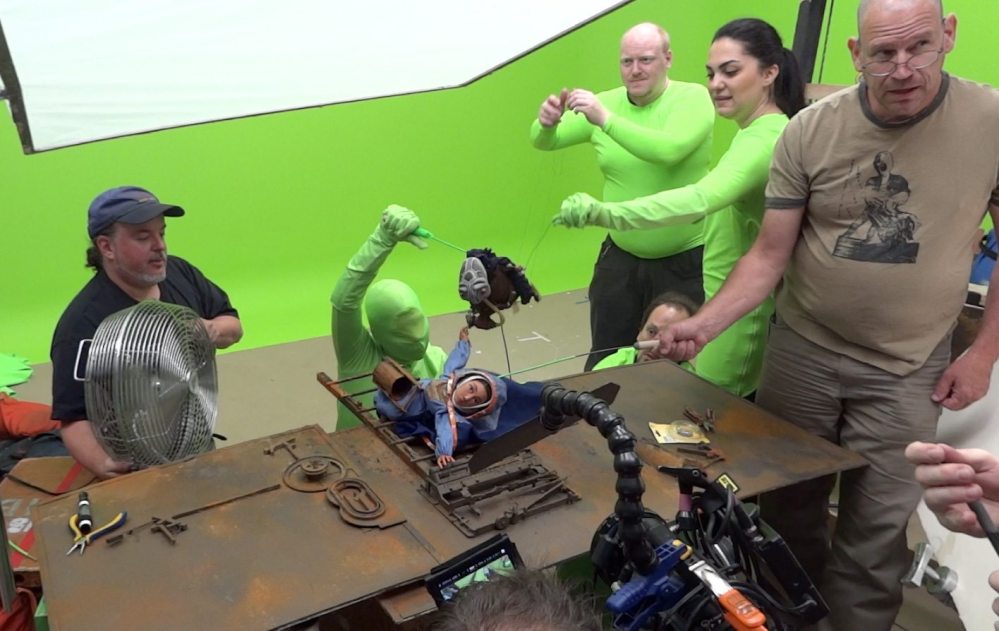
GeekDad: Back to Mat, have you done any projects similar to this before?
Rudenberg: I’ve done some smaller puppetry elements in films, and a fair amount of greenscreen, but this was my first entirely puppet and greenscreen show.
GeekDad: Are there particular challenges involved in shooting Monster of the Sky, between the puppetry and the green screen, that you hadn’t encountered before?
Rudenberg: I think the biggest challenge is that of scale. Lenses behave differently when they are focused on small objects up close (puppets and models) compared to large objects farther away (people and real buildings). You can get a shallow focus effect often used in tilt-shift photography (such as in the rowing scene in The Social Network) that reveals the size of the objects. Sometimes there were ways to compensate for this but other times we had to embrace them.
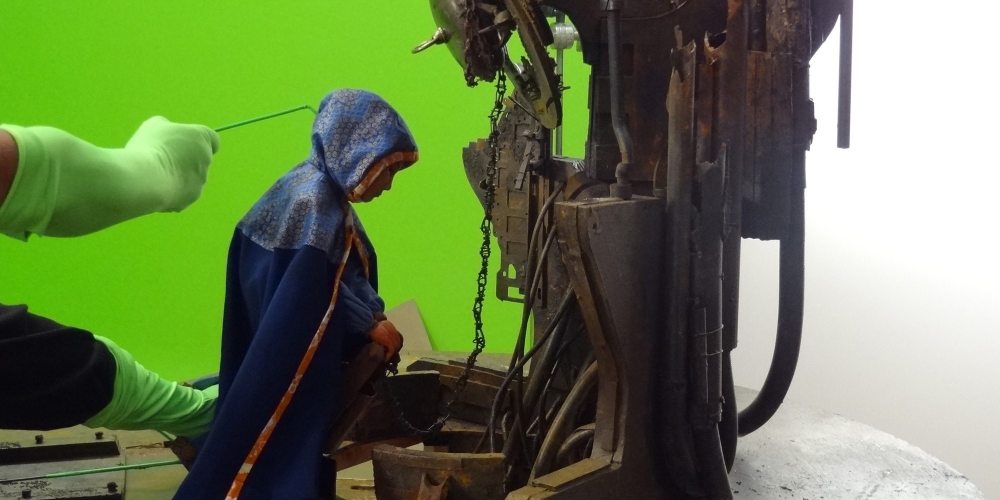
GeekDad: One last question for everyone: What was your favorite part of shooting Monster of the Sky, and what was your least favorite?
Rudenberg: My favorite part was working with all the talented sculptors and puppeteers, who did such a great job putting the puppets and sets together and bringing them to life. Sam’s puppet building and Charles’ sets were both incredible. The least favorite would be having to do the backgrounds all greenscreen. It would be so nice to see everything immediately rather then have to have an extended period of post before the shots are finished.
Woolen: Monster was a real pleasure to work on, plenty of hands to shake the dollies, interesting puppets and great friends to hang out with. The greenscreen hoods are a real challenge to work with though. If there was one thing that could be called least favorite that would be it.
Burchill: Favorite: seeing the sets and learning about the film making process (most of my work has been live on stage) also meeting new people. The worst part is having people see my grump side.
Aayani: This show was one of my favorites so far! I loved the puppets and the set! It was really fantastic that the set could move. Sam is one of the best people that I worked with and I’m honored to have the opportunity to work with these amazing people in this project!
D’Arc: Sam’s shoot was delightful in every way, and I enjoyed making new friends, reinforcing old friendships, and was thrilled to have a small part to play in the making of a puppet film of such a high quality as Monster of the Sky! I hope Sam has me back for the next shoot (hint, hint, Sam!).
Thanks to Sam Hale and the rest of the crew for letting me pester them on the set! I’m really looking forward to seeing how everything comes together. To follow the film’s progress, visit the Monster of the Sky Facebook page. Also, check out the new Kickstarter post-production campaign.
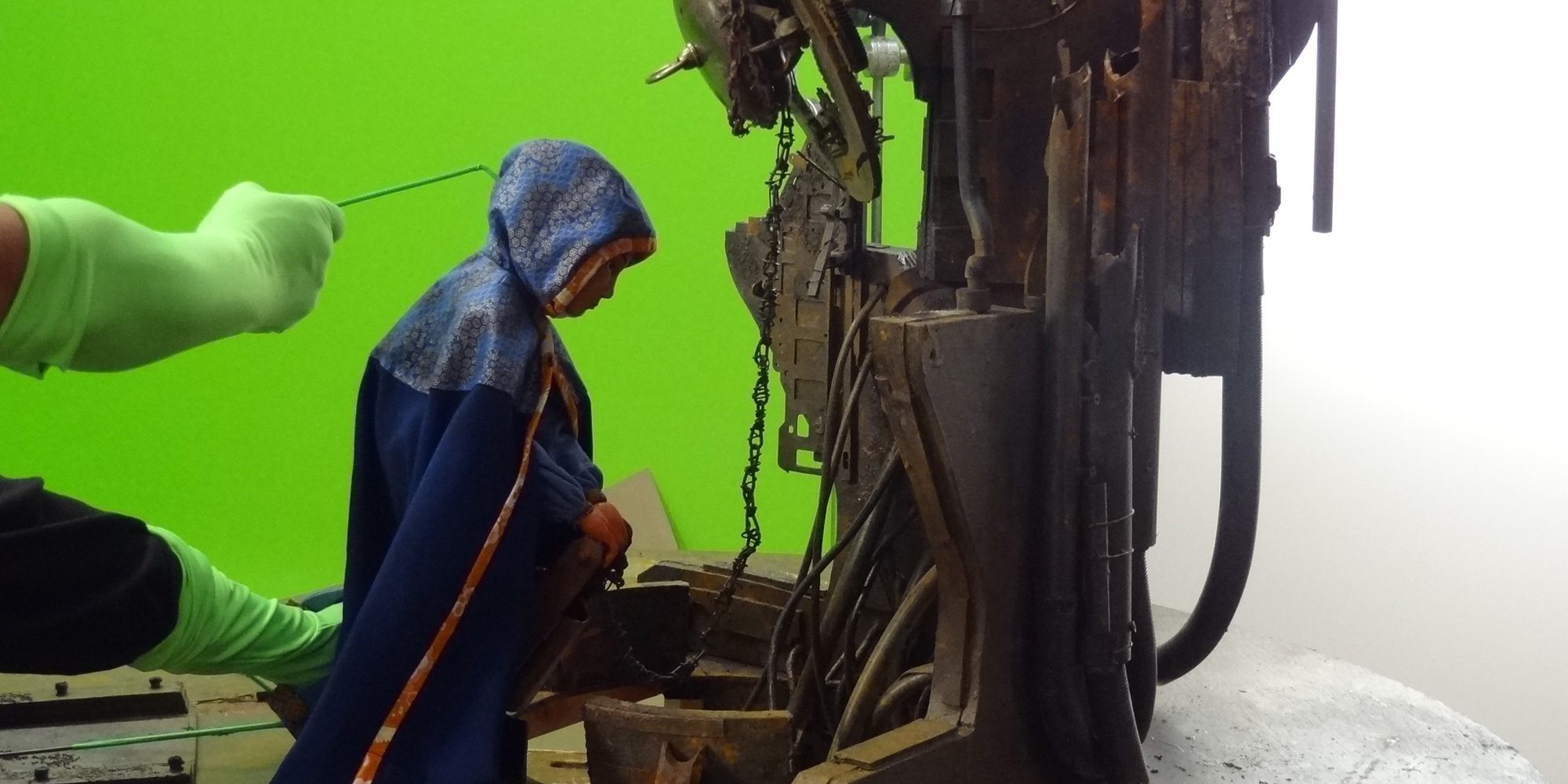


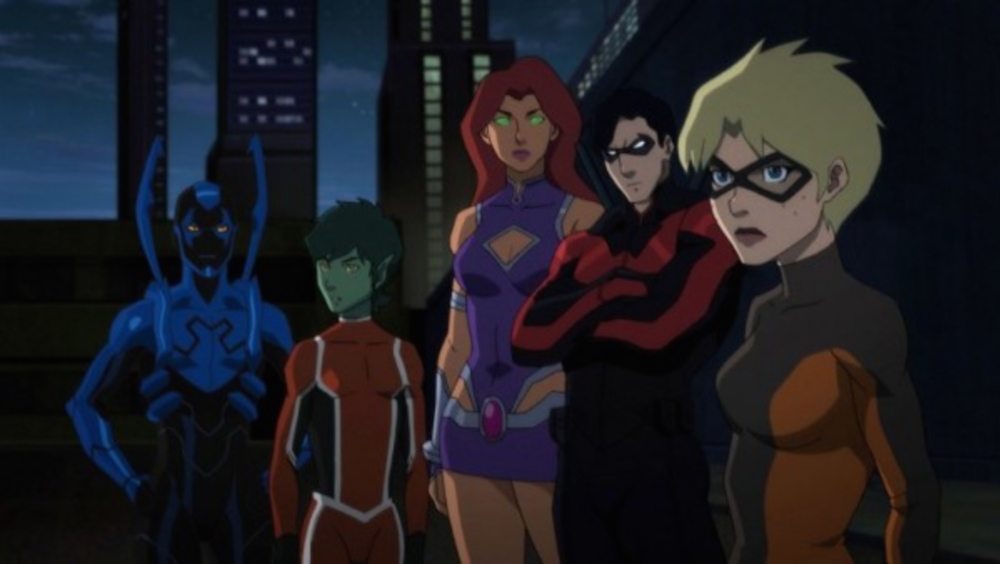

I wish I wish to one day be part of a dream like this with my puppets! Beautifull